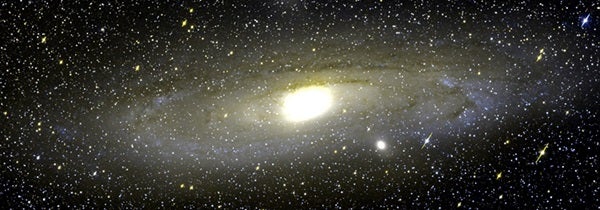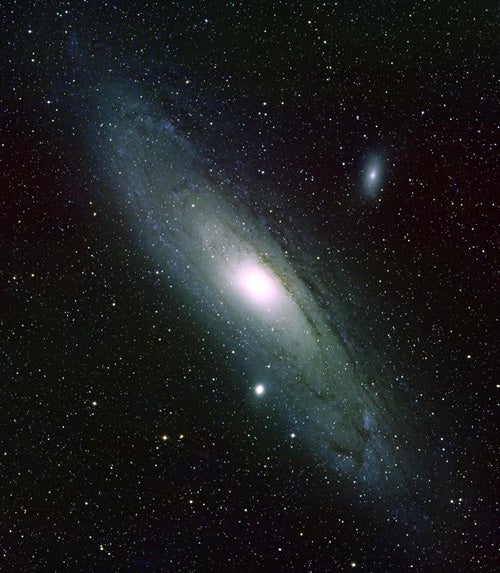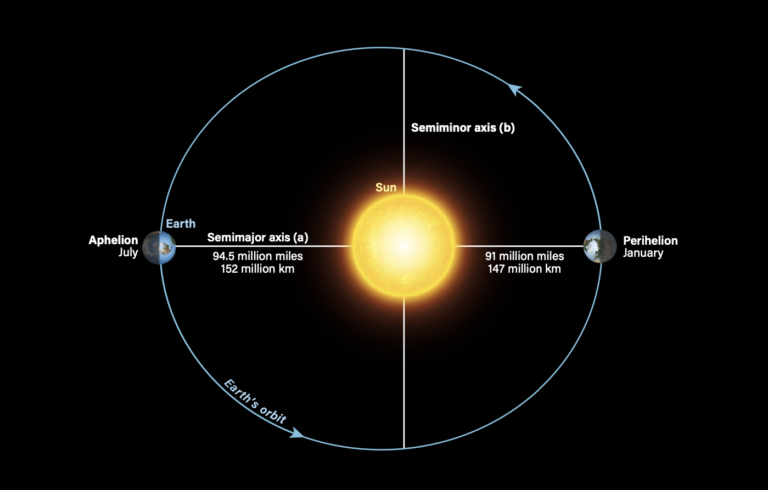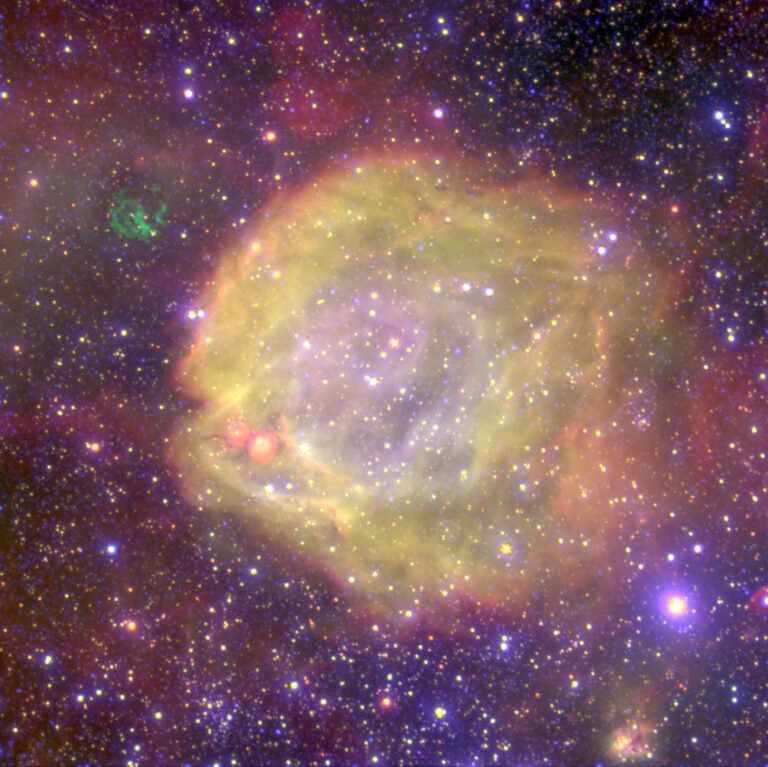An enormous disk of stars surrounds the Andromeda Galaxy’s bright disk, say astronomers in Europe, the United States, and Australia. The newfound stellar disk spans at least 260,000 light-years, almost twice the size of the bright disk seen in photographs, and emits nearly 10 percent of the galaxy’s total light. Andromeda may have stripped these stars from smaller galaxies that strayed too close.
Lying just 2.5 million light-years away, the Andromeda Galaxy (M31) is the nearest giant spiral to our own. Of the 40 or so galaxies in the Local Group, Andromeda is the largest and most luminous; the Milky Way ranks number two.
Rodrigo Ibata of Strasbourg Observatory in France and his colleagues used the Keck Telescope in Hawaii to observe more than two dozen regions in and around Andromeda. Some of these regions lay in Andromeda’s bright disk, but most were located beyond.
The astronomers traced these stars’ motions at distances ranging from 50,000 to 130,000 light-years from M31’s center. Furthermore, in some regions, stars are revolving around Andromeda as far as 230,000 light-years from the galaxy’s center. For comparison, the Large Magellanic Cloud, our Galaxy’s brightest satellite, is only 160,000 light-years from the Milky Way’s center.
The newly discovered disk has a low surface brightness but blends smoothly with the bright, inner one. Because the new disk is so large, its stars contribute nearly 10 percent of Andromeda’s light. Moreover, because the stars are so far from the galaxy’s center, they account for 30 percent of the angular momentum in the galaxy’s disks.
If the newly discovered disk were visible to the naked eye, the Andromeda Galaxy’s major axis would appear more than 11 times larger than the diameter of the Full Moon.
“It’s obviously an important discovery,” says Sidney van den Bergh at the Dominion Astrophysical Observatory in Victoria, British Columbia, who is an expert on the Local Group but was not affiliated with the discovery team. “I have no doubts about the validity of the work.” Because of the new disk’s high luminosity and large angular momentum, van den Bergh says it must have represented a major event in the life of Andromeda.
The disk’s outskirts are irregular, suggesting to Ibata and his colleagues that Andromeda likely snatched the material from galaxies that wrecked themselves on Andromeda’s shores.
One future victim may be NGC 205, a dwarf elliptical that orbits close to Andromeda. Ibata’s team says this galaxy already may be shedding stars into Andromeda’s newfound disk.
The new disk is metal-poor, bearing lesser quantities of heavy elements than does the Sun. By observing near-infrared spectral lines due to calcium, the astronomers find the stars have about 13 percent as much of this element as our Sun. This is the same metal content as NGC 205.
Writing in a paper submitted to The Astrophysical Journal, the astronomers say, “This finding indicates that at least some galactic stellar disks are vastly larger than previously thought and are formed, at least in their outer regions, primarily by accretion.”











